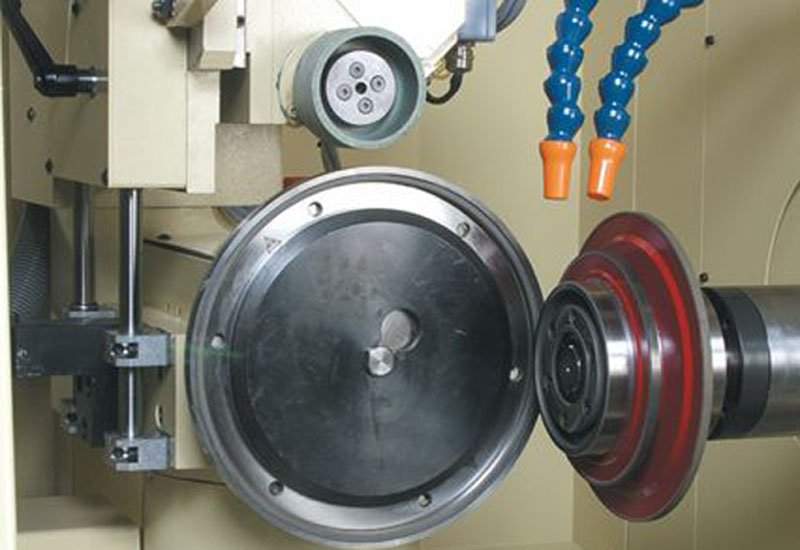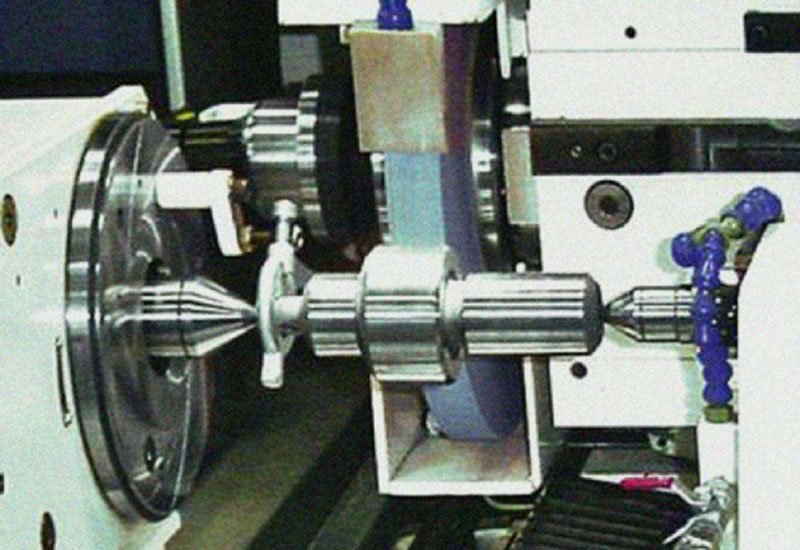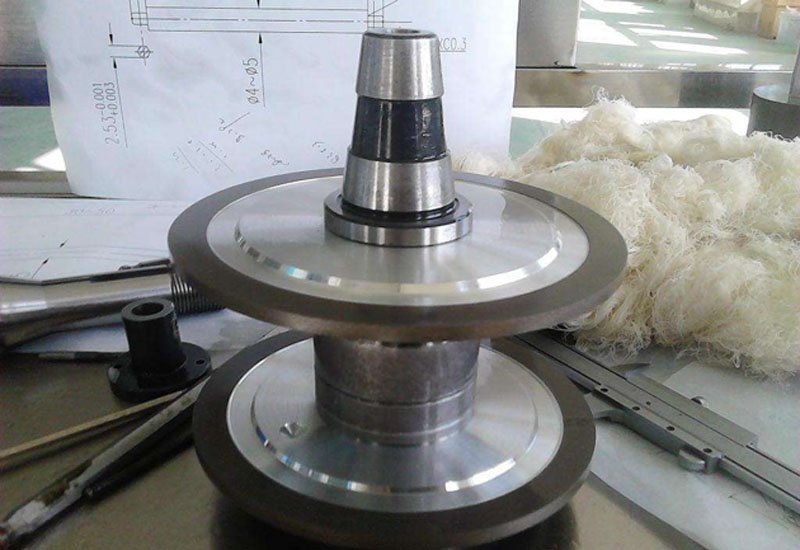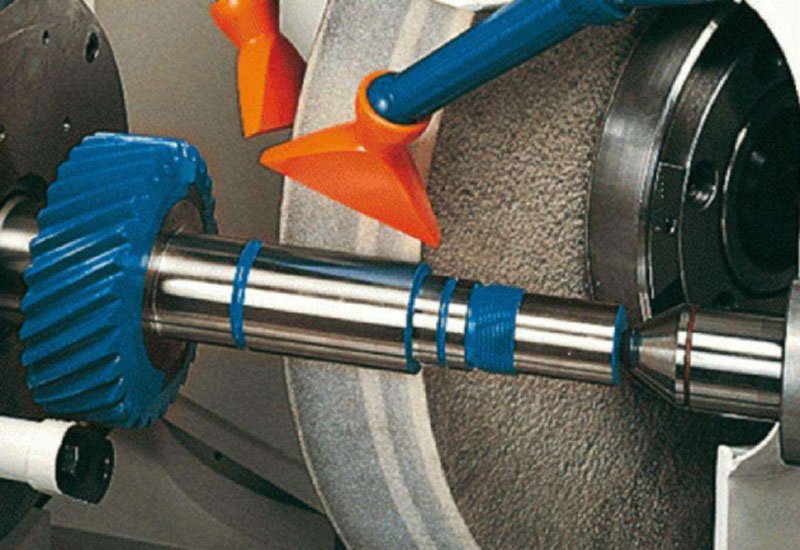How to choose the grinding wheels for stainless steel
How to choose the grinding wheels for stainless steel
1. Types of Stainless Steel Products
There are many kinds of stainless steel. According to the composition, there are chromium stainless steel and chromium-nickel stainless steel. According to the internal structure, there are martensitic stainless steel, ferritic stainless steel, austenite stainless steel, austenitic-ferritic stainless steel and, precipitation hardening stainless steel.
2.Grinding Features of Stainless Steel
2.1 Large grinding force and high grinding temperature
With a high temperature, high strength and high toughness of stainless steel, the lattice distortion is large and the plastic deformation is severe when grinding. The cutting force per unit area of stainless steel can reach 90GPa, and the grinding force is 1.5-2.2 times that of 45# steel. High grinding resistance results in high temperature in grinding zone.
The low thermal conductivity of stainless steel that is about 1/3 of 45# steel makes the instantaneous high temperature of 1000-1500℃ on the workpiece surface. The workpiece surface is easily burned and cracks occur on the workpiece. Sometimes annealing occurs on the workpiece surface, and the annealing depth can reach 0.01-0.02mm.
2.2 Serious work hardening trend
When stainless steel grinding, the workpiece surface deformation is severe, and the stress and strain increase, resulting in work hardening. In the work hardening layers, grains distort and sand grains wear and passivate, and produce vibration marks and scratches.
2.3 Abrasive debris adhere to grinding wheel
Owing to high toughness of stainless steel, abrasive debris is reacted with sand grains easily under certain grinding temperature, contact pressure and relative velocity conditions. Therefore, abrasive debris adheres to the grinding wheels, filling the gap among the abrasive grains, making the grinding wheel blocked sharply. At this time, the grinding conditions deteriorate rapidly, heat serious, and the surface roughness decreases significantly.
The adhesions of abrasive debris are different because of different stainless steel. It is most serious for grinding adhesion for concentrated nitric acid resistant stainless steel and heat-resistant stainless steel, followed by 1Cr18Ni9Ti and 1Cr13, 2Cr13, etc.

2.4 Difficult to cut off for abrasive debris and easy to wear blunt for abrasive grains
When stainless steel grinding, the grinding force is large and the abrasive grains are easily blunt, making the grinding wheel wear. In general, when stainless steel grinding, the grinding ratio is G=6-12, while ordinary carbon steel and low alloy steel grinding, the grinding ratio is G=40-80. Therefore, the grinding ratio of stainless steel is only about 1/7 of that of ordinary steel.
2.5 Machined surface to be burned
A burned surface workpiece is one of the common defects in grinding, especially austenitic stainless steel, which is more sensitive to burn.
2.6 Workpiece surface to be scratched
When grinding stainless steel, the machined surface is scratched easily, which is not allowed, in term of the machined surface roughness requirements are high.
The causes of scratched: there are individual prominent abrasive grains on the working face of the grinding wheels, and scratches the working surface before they falling off. The abrasive debris falling off the grinding wheel to fall the place between the grinding wheel and the workpiece, causing the scratches on the working surface. The debris fluid is not clean, mixed with abrasive debris, and the supply of debris fluid is insufficient, scratches occur in the grinding process.
2.7 Workpiece to be deformed
Because the linear expansion coefficient of stainless steel is large, and the influence of grinding temperature on the workpiece dimension is also great, it is easy to cause errors in dimension measurement. In addition, the trend of work hardening of stainless steel is serious, and the workpiece surface easily produces residual stress.
Especially when grinding the long and thin shaft workpiece, thin-walled workpiece and other workpieces with poor rigidity, the workpieces are deformed easily under the action of grinding force.

3 Selection of grinding wheels for stainless steel
3.1 Selection of abrasive types
When grinding stainless steel, white fused alumina(WA) is generally used. White fused alumina features good cutting performance and good self-sharpening. Grinding stainless steel with cubic boron nitride grinding wheel has the best effect (recommended grain size F120, concentration 100%, resin bond). Because CBN has high hardness, grains easily wear, and good chemical stability, and it does not have a chemical affinity with iron group elements, therefore CBN grinding wheels are not blocked easily when grinding.
The grinding force and grinding heat of CBN grinding wheels are low, not burn the workpieces. But the price of CBN grinding wheels for stainless steel is higher than that of an ordinary grinding wheel. Also, it will be dressed according to the actual situation.
The grinding effect of monocrystalline fused alumina grinding wheel is second only to that of CBN grinding wheel. Because each grain is a spherical polyhedral monocrystalline, and there are no cracks and residual stress caused by mechanical crushing. If there are the less sudden crush of a single abrasive grain, and there is a good match between hardness and toughness. Therefore, monocrystalline fused alumina has good grinding performance.
When grinding acid- resistant stainless steel, grinding scratches can be reduced. Especially monocrystalline fused alumina with large aperture has good application effect in production.
When grinding Cr17Ni7A1 precipitation hardening stainless steel, microcrystalline fused alumina (MA) grinding wheel is used. Microcrystalline fused alumina features high toughness, high cutting performance, and long service life. Self-sharpening is cracked along the crevice of microcrystalline, and it does not cause large or whole abrasive grains to fall off. It is good for reducing grinding heat and blocking of grinding wheels.
When grinding austenitic stainless steel, microcrystalline fused alumina and green silicon carbide made from grinding wheel are used. The workpiece roughness can be greatly reduced, and reduce or eliminate the burn.
3.2Selection of abrasive grain size
The grain size of abrasive grains has a direct impact on the surface roughness. Owing to the high toughness of stainless steel, abrasive debris blocks easily. If fine grit grinding wheels are used, makes the abrasives lose cutting effect, and makes the workpiece surface not finish. It is shown that F36, the F46 grain size is for rough grinding and F60 is for finish grinding. For both rough and finish grinding, F46 and F60 grain size grinding wheels are used.

3.3Selection of bond
Stainless steel features high toughness, high temperature, high strength, and high grinding force. So it is required that grinding wheels have high strength and can withstand large impact loads.
Vitrified bond grinding wheel can be used for grinding stainless steel. It has high waterproof, high heat resistant, high corrosion resistant, can keep cutting performance well and has high production efficiency. Its disadvantage is that it is brittle and cannot withstand large impact and bending.
Resin bond grinding wheels are used for stainless steel cutting, grooving, and centerless grinding. It has high strength, good elasticity, shock-free and many porous and can be used for high peripheral speed(35-75m/s). But resin bond grinding wheels have low hardness. If put the resin grinding wheel into the paraffin wax, it can prevent the influence of alkaline solution. In addition, when the temperature is higher than 150℃, the resin bond will soften and reduce its strength, even burn. Therefore, it should be cooling when grinding.

3.4 Selection of hardness of grinding wheel
When grinding stainless steel, low hardness grinding wheels are used with better self-sharpening. When the hardness is too low, the abrasive grains are not firmly bonded and fall off before being blunt, which will greatly reduce the service life of grinding wheels for stainless steel.
Conclusions:
In a word, when grinding stainless steel, choose CBN grinding wheel and ordinary grinding wheel in term of economical situations and actual situations of grinding materials. In addition, in practical applications, ordinary abrasive belts and CBN abrasive belts are also used for grinding.
.webp)